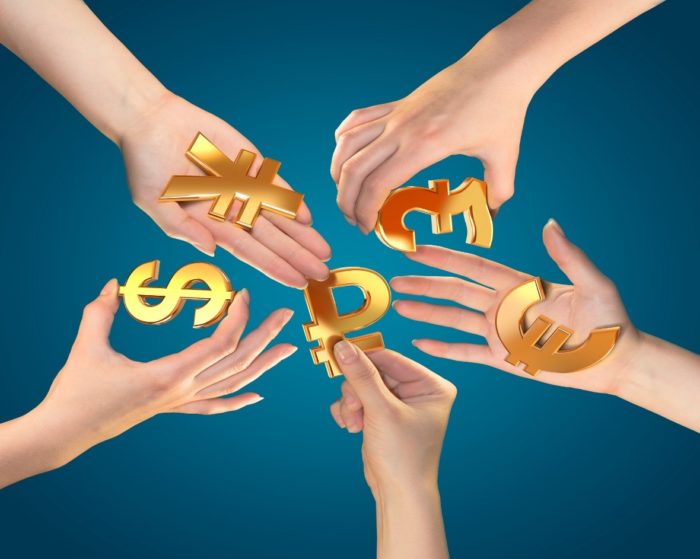The Currency Exchange

If I asked you what a nickel is worth you would say “five cents”. A quarter, you would say, is worth twenty-five cents.
If I asked what you could buy with a nickel or a quarter today, the answer is not as easy. A quarter buys me 15 minutes in a parking meter, but I can’t think of a single thing today that I can buy with a nickel.
Today the value of a currency is measured relative to other currencies. Globally there are 180 currencies that are considered “legal tender”. [1]
If you fancy a trip to Iceland, you will need krone (pronounced krona) Going to India? Buy some rupees first.
I always exchange dollars for the currency of the country I am visiting. I like seeing what the currency of other countries looks like and invariably I need some cash.
If you use a credit card your bank will convert your dollars at the current exchange rate. A few years ago, I was in Vienna. I needed to buy nail polish, doesn’t everyone? I went into one of the pharmacy slash beauty stores and a very helpful saleswoman took me directly to the Dior nail polish counter (uh-oh).
I have to say that she did pick out the perfect color and I use the same color to this day but that is beside the point. Dior nail polish is expensive. Austria uses the Euro, so based on the exchange rate I’m figuring out how much €25 is in $ dollars. I want to know if I am paying more or less than the price in the United States.
Today the exchange rate is €1 one euro is equal to $1.11.
This means I will have to pay $1.11 to buy one euro and then I can buy the polish.
The cost of the polish is 25 euros times $1.11. This is equal to $27.75. Turns out that the same polish in the US is $28.00 so pretty darn close in terms of the exchange rate.
Did I just admit paying $28.00 for a bottle of nail polish? Well, it is the perfect color and it lasts forever.
What if the cost to buy a euro goes up to $1.50? My cost is now (25 times $1.50) $37.50. If the euro costs $1.50 it is much more expensive to buy the polish in euros.
If the euro goes from $1.11 to $1.50, we would say that the euro is strong against the dollar. You can also say the euro is expensive relative to the dollar.
Think about this from the point of view of someone visiting the United States from the European Union.
The person who comes here and buys the Dior polish is going to pay $28.00. In their home country they are going to pay $37.50. Prices in their country have gone up because their currency is strong. This in turn causes inflation.
The monetary authorities of a country can devalue their currency. The way a currency is devalued is always relative to another currency.
Devaluing a currency makes exports cheaper. China has threatened to devalue the yuan in retaliation to the increase in tariffs.
The Chinese are saying “go ahead, increase tariffs. By devaluing our currency, we are going to make our goods less expensive so your tariffs will not impact our exports” or something to that effect.
Devaluing a currency can backfire though. As exports become cheaper, imported goods become more expensive.
As demand for imports goes up the risk of inflation goes up as well (higher prices). To put a lid on inflation a central bank raises interest rates. The downside is that raising interest rates can lead to a slower economy.
Devaluing your currency is not a great policy tool if you are trying to stimulate growth in your economy.
What I find curious is that the United States believed, until now, that the Chinese yuan was overvalued, and encouraged China to devalue their currency. How times change.
The question I have for you is: “do you own currency in your portfolio?”
The answer may surprise you. If you own mutual funds or ETF’s that are global, foreign, non-US or emerging markets you should know if you have currency exposure.
The way you find out is to see if the fund is “hedged” meaning no currency risk, or “unhedged” meaning there is currency exposure in the fund.
Like all investments there is a risk in owning currency directly or indirectly. Owning currency is not a good or bad idea. It is another tool to diversify your portfolio.
$ US Dollar
¥ Japanese Yen
£ Great British Pound
€ Euro
₽ Russian Ruble
[1] https://en.wikipedia.org/wiki/List_of_circulating_currencies
This website is for informational purposes only and does not constitute an offer to sell, a solicitation to buy, or a recommendation for any security, nor does it constitute an offer to provide investment advisory or other services by The Modest Economist LLC.
